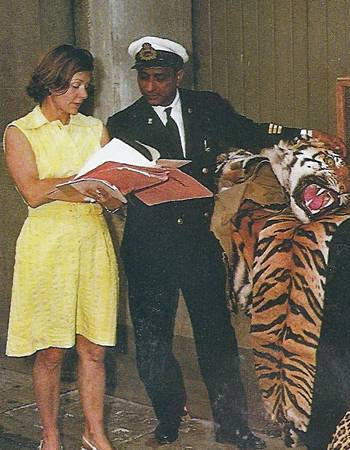Anne Wright
Lifetime Service Award (2013)
Anne Wright Courageous, determined and effective, this defender of our wilds laid the foundations of India’s wildlife movement five decades ago and has served as a field worker, administrator, lobbyist and activist all rolled into one.
The daughter of an Indian Civil Service officer, she spent her childhood in the forests of Madhya Pradesh, where her passion for wildlife was nurtured. As a child, she would search for scorpions, follow tigers’ pugmarks on golf courses and watch panthers leap across the parapets of Amravati’s rugged Gawilgarh Fort. Anne lived at an age when shikar was commonplace, and wildlife conservation really became part of her life when she saw the impact of the great drought of 1967 and 1968, which took a massive toll of wildlife in the jungles of Bihar. She imbibed much of her knowledge and values from the legendary E.P. Gee and helped set up the World Wildlife Fund in India in 1969. In 1971, she wrote an exposé in Calcutta’s leading newspaper, The Statesman, describing the shocking trade in big cat skins in Calcutta’s New Market. The article was republished in The New York Times, headlined “Doom awaits tigers and leopards unless India acts swiftly.” The story raised an outcry and was one of the first serious documentations of the large-scale slaughter of India’s wild tigers and leopards. As one of the most trusted advisors of the late Prime Minister of India, Mrs. Indira Gandhi, Anne was appointed as a member of India’s elite Tiger Task Force in 1972. After carrying out a rapid survey of key tiger habitats, the Task Force prepared a remarkable document titled ‘Project Tiger; a planning proposal for the preservation of tigers in India’. Launched the following year, initially with nine tiger reserves, this was the beginning of one of the most ambitious wildlife conservation projects in history.
Anne Wright also worked with others on the drafting of the Wildlife (Protection) Act in 1972, and personally pushed through the creation of a number of Protected Areas, including the Dalmia Wildlife Sanctuary in what is now Jharkhand (1976), Balphakram National Park in Meghalaya (1986) and Neora Valley National Park in West Bengal (1986).
Anne served on the Indian Board for Wildlife for 19 long years. She was also on the Wildlife Boards of seven states from Meghalaya to the Andamans and was at the forefront of India’s conservation movement for decades. She established and continues to Chair the Rhino Foundation and supported a number of organisations including Aaranyak in their early stages of inception. In recognition of her service to wild India, Anne was awarded the Order of the Golden Ark in 1979, and the ‘Most Excellent Order of the British Empire’ (MBE) in 1983.
From tigers, elephants, and rhinos, to hornbills and pygmy hogs, she has worked tirelessly over a lifetime to protect them all.
For this, we honour her.


